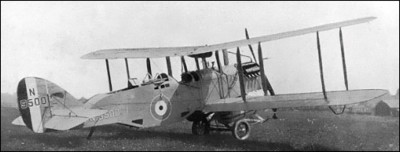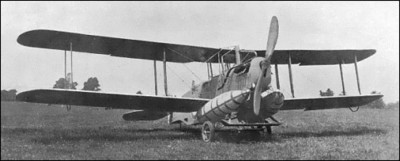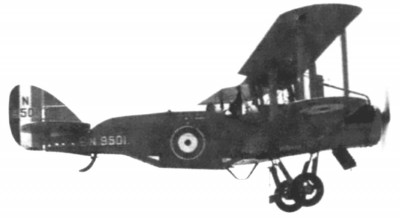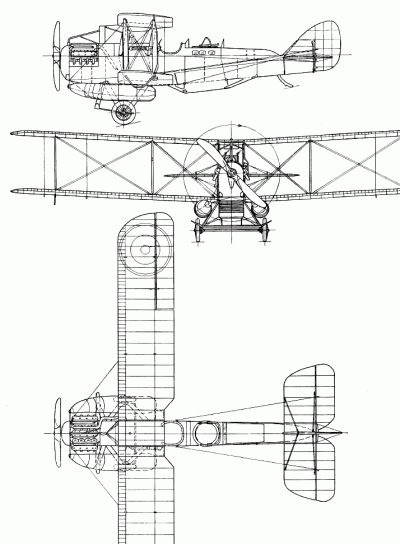| Název: Name: | Westland Walrus | Westland Walrus |
| Originální název: Original Name: | Westland Walrus | |
| Kategorie: Category: | průzkumný/pozorovací letoun | reconnaissance/scout aeroplane |
| Výrobce: Producer: | DD.MM.1921-DD.MM.1923 Westland Aircraft Works, Yeovil | |
| Období výroby: Production Period: | DD.MM.1921-DD.MM.1923 | |
| Vyrobeno kusů: Number of Produced: | 36 | |
| První vzlet: Maiden Flight: | DD.02.1921 | |
| Osádka: Crew: | 3 | |
| Základní charakteristika: Basic Characteristics: | ||
| Vzlet a přistání: Take-off and Landing: | CTOL - konvenční vzlet a přistání | CTOL - conventional take-off and landing |
| Uspořádání křídla: Arrangement of Wing: | dvouplošník | biplane |
| Uspořádání letounu: Aircraft Concept: | klasické | conventional |
| Podvozek: Undercarriage: | pevný | fixed |
| Přistávací zařízení: Landing Gear: | kola | wheels |
| Technické údaje: Technical Data: | ||
| Hmotnost prázdného letounu: Empty Weight: | 1442 kg | 3180 lb |
| Vzletová hmotnost: Take-off Weight: | 2267 kg | 4998 lb |
| Maximální vzletová hmotnost: Maximum Take-off Weight: | ? kg | ? lb |
| Rozpětí: Wingspan: | 14.07 m | 46ft 2in |
| Délka: Length: | 9.07 m | 29ft 9in |
| Výška: Height: | 3.53 m | 11ft 7in |
| Plocha křídla: Wing Area: | 46.08 m2 | 496 ft2 |
| Plošné zatížení: Wing Loading: | 52.73 kg/m2 | 10.8 lb/ft2 |
| Pohon: Propulsion: | ||
| Kategorie: Category: | pístový | piston |
| Počet motorů: Number of Engines: | 1 | |
| Typ: Type: | Napier Lion II o výkonu 336 kW dvoulistá dřevěná vrtule | Napier Lion II, power 450 hp two blade wooden propeller |
| Objem palivových nádrží: Fuel Tank Capacity: | ? | ? |
| Výkony: Performance: | ||
| Maximální rychlost: Maximum Speed: | 199.6 km/h v 0 m | 124 mph in 0 ft |
| Cestovní rychlost: Cruise Speed: | ? km/h v ? m | ? mph in ? ft |
| Rychlost stoupání: Climb Rate: | 4.8 m/s | 950 ft/min |
| Čas výstupu na výšku: Time to Climb to: | 10 min do 3000 m | 10 min to 9843 ft |
| Operační dostup: Service Ceiling: | 5791 m | 19000 ft |
| Dolet: Range: | ? km | ? mi |
| Maximální dolet: Maximum Range: | ? km | ? mi |
| Výzbroj: Armament: | 1x pevný 7.7mm kulomet Vickers v přídi 1-2x 7,7mm kulomet Lewis na oběžném kruhu Scarff | 1x fixed .303 Vickers machine gun 1-2x .303 Lewis gun on Scarff ring |
| Uživatelské státy: User States: | | |
| Poznámka: Note: | - | - |
| Zdroje: Sources: | Thetford, Owen. British Naval Aircraft since 1912. Naval Institute Press, Annopolis 1991, ISBN 1-55750-076-2. Thetford, Owen. Aircraft of the Royal Air Force since 1918, Putnam Aeronautical Books, London 1976. ISBN 0-37010-056-5. Thetford, Owen. British Naval Aircraft since 1912, Putnam Aeronautical Books, London 1978. ISBN 0-370-30021-1. www.britishaircraft.co.uk www.aviastar.org www.flightglobal.com | |
Westland Walrus
This is without dispute one of the ugliest aircraft was created thanks to the policy of the british armed forces in the years after the end of the 1. world war, that tried to meet the demand for new machines by a simple rebuilding and developing the already tried and tested aircraft. When she showed up the need to develop a new aircraft for maritime reconnaissance and guidance of artillery fire, in accordance with new technologies like wireless radio, it was necessary to count with the third specialist member of the crew. The navy for economic reasons, immediately reached for their proven two-seater daylight bomber D.H.9A, which was built around 2000 pieces and no thus the lack of spare parts. Several of these machines, therefore, passed through the enlarged rear compartment a finish to the three-digit and its effectiveness demonstrated during the artillery exercises of the fleet in 1920. But this was only a stopgap solution, D.H.9A should have a fairly high landing speed and even nesklopitelnými wings to be unfit for operation on board ships.
A freshly created company Armstrong Whitworth Aircraft therefore started to work on more advanced conversion, which resulted in the early 1920s in her type of Tadpole. Basically it was a standard D.H.9A, but with wings without stupnění, the third cockpit for the radio operator located in an elevated back for the gunner/observer, and under it bulging "belly" allowing observers aiming lying down. The only prototype, J6585, was built in coventryjském Parkside, and fly to the new airport at Whitley Abbey, further development was then handed over to the company Westland Yeovilu, which already had a building D.H.9 your experience. Designer Arthur Davenport, the project added other elements, engine Liberty replaced the stronger Lionem, the radiator moved under the bow, all three cockpits got wind labels and on both sides of the bow were placed bags the type of Grain that was possible in the case of landing on the water to inflate and to prevent the sinking. Before the gear legs also added the flat, which had on impact on the water to prevent tipping over. The link between podvozkovými legs then came the catch hooks for landing on the ship. Patented pressure valve also allowed to quickly drain the fuel from the tank and re-seal, so then it served as an auxiliary float.In its initial form had a new prototype, named Walrus, the wings are still solid, the chassis spring-loaded rubber bundles, later got as well as serial machines detachable wings with the corner balancing of the aileron and olejopneumatické cushioning. Fuel pump and generator for the radio's powered by two small propellers placed in front of the cockpit.
Walrus first flew in Yeovilu sometime in February or march 1921, and proved to be very poorly operated. This manifested itself during the landing, when the pilot Stuart Keep prevent it from tipping over with just a quick addition of gas and the mechanic, who flew as a live load, which quickly climbed into the rear compartment and hung on the tail. Yet it was ordered 36 serial machines, problems with maneuverability partially solve the above-mentioned new wings and parts of machines also enlarged rudder. Yet the type known for the large amount of accidents, with at least two lame ducks unlikely to undertake before passing it on. The only user Walrusů in the RAF became in January 1922 3. squadron in Leuchars and later Gosport, until she was a year later transformed into a 421. and 422. a squadron of the Royal Navy, each with six machines. Other machines have been passed to 420. and 423. squadron. With them then got on the aircraft carrier Furious (420. and 421. squadron), Eagle (422. fleet) and Argus (423. squadron), where continued in any significant service until the end of the year 1925, when it replaced another of the contestants for the title of ugliest aircraft, Blackburny Blackburn and Avra Bison..
Čelní pohled na prototyp Walrusu, s původním podvozkem a křídly a nafouknutými plovacími vaky. Stejný stroj je i na nákresu.
A freshly created company Armstrong Whitworth Aircraft therefore started to work on more advanced conversion, which resulted in the early 1920s in her type of Tadpole. Basically it was a standard D.H.9A, but with wings without stupnění, the third cockpit for the radio operator located in an elevated back for the gunner/observer, and under it bulging "belly" allowing observers aiming lying down. The only prototype, J6585, was built in coventryjském Parkside, and fly to the new airport at Whitley Abbey, further development was then handed over to the company Westland Yeovilu, which already had a building D.H.9 your experience. Designer Arthur Davenport, the project added other elements, engine Liberty replaced the stronger Lionem, the radiator moved under the bow, all three cockpits got wind labels and on both sides of the bow were placed bags the type of Grain that was possible in the case of landing on the water to inflate and to prevent the sinking. Before the gear legs also added the flat, which had on impact on the water to prevent tipping over. The link between podvozkovými legs then came the catch hooks for landing on the ship. Patented pressure valve also allowed to quickly drain the fuel from the tank and re-seal, so then it served as an auxiliary float.In its initial form had a new prototype, named Walrus, the wings are still solid, the chassis spring-loaded rubber bundles, later got as well as serial machines detachable wings with the corner balancing of the aileron and olejopneumatické cushioning. Fuel pump and generator for the radio's powered by two small propellers placed in front of the cockpit.
Walrus first flew in Yeovilu sometime in February or march 1921, and proved to be very poorly operated. This manifested itself during the landing, when the pilot Stuart Keep prevent it from tipping over with just a quick addition of gas and the mechanic, who flew as a live load, which quickly climbed into the rear compartment and hung on the tail. Yet it was ordered 36 serial machines, problems with maneuverability partially solve the above-mentioned new wings and parts of machines also enlarged rudder. Yet the type known for the large amount of accidents, with at least two lame ducks unlikely to undertake before passing it on. The only user Walrusů in the RAF became in January 1922 3. squadron in Leuchars and later Gosport, until she was a year later transformed into a 421. and 422. a squadron of the Royal Navy, each with six machines. Other machines have been passed to 420. and 423. squadron. With them then got on the aircraft carrier Furious (420. and 421. squadron), Eagle (422. fleet) and Argus (423. squadron), where continued in any significant service until the end of the year 1925, when it replaced another of the contestants for the title of ugliest aircraft, Blackburny Blackburn and Avra Bison..
| Period | - |
| Producer | - |
| Type | - |
| Camouflage | - |
| Country | - |
| Pilot | - |
| Production No. | - |
| Serial No. / Evidence No. | - |
| Tactical Marking / Imatriculation | - |
| Name | - |
| Unit | - |
| Base | - |
| Date (DD.MM.RRRR) | DD.MM.RRRR |
| Author | - |
| Print size / 300 DPI | - |
| Published with authors permit | - |
| Author Website | - |
| Period | - |
| Producer | - |
| Type | - |
| Camouflage | - |
| Country | - |
| Pilot | - |
| Production No. | - |
| Serial No. / Evidence No. | - |
| Tactical Marking / Imatriculation | - |
| Name | - |
| Unit | - |
| Base | - |
| Date (DD.MM.RRRR) | DD.MM.RRRR |
| Author | - |
| Print size / 300 DPI | - |
| Published with authors permit | - |
| Author Website | - |
Čelní pohled na prototyp Walrusu, s původním podvozkem a křídly a nafouknutými plovacími vaky. Stejný stroj je i na nákresu.
| Period | - |
| Producer | - |
| Type | - |
| Camouflage | - |
| Country | - |
| Pilot | - |
| Production No. | - |
| Serial No. / Evidence No. | - |
| Tactical Marking / Imatriculation | - |
| Name | - |
| Unit | - |
| Base | - |
| Date (DD.MM.RRRR) | DD.MM.RRRR |
| Author | - |
| Print size / 300 DPI | - |
| Published with authors permit | - |
| Author Website | - |
| Period | - |
| Producer | - |
| Type | - |
| Camouflage | - |
| Country | - |
| Pilot | - |
| Production No. | - |
| Serial No. / Evidence No. | - |
| Tactical Marking / Imatriculation | - |
| Name | - |
| Unit | - |
| Base | - |
| Date (DD.MM.RRRR) | DD.MM.RRRR |
| Author | - |
| Print size / 300 DPI | - |
| Published with authors permit | - |
| Author Website | - |
Reklama
Join us
We believe that there are people with different interests and experiences who could contribute their knowledge and ideas. If you love military history and have experience in historical research, writing articles, editing text, moderating, creating images, graphics or videos, or simply have a desire to contribute to our unique system, you can join us and help us create content that will be interesting and beneficial to other readers.
Find out more


